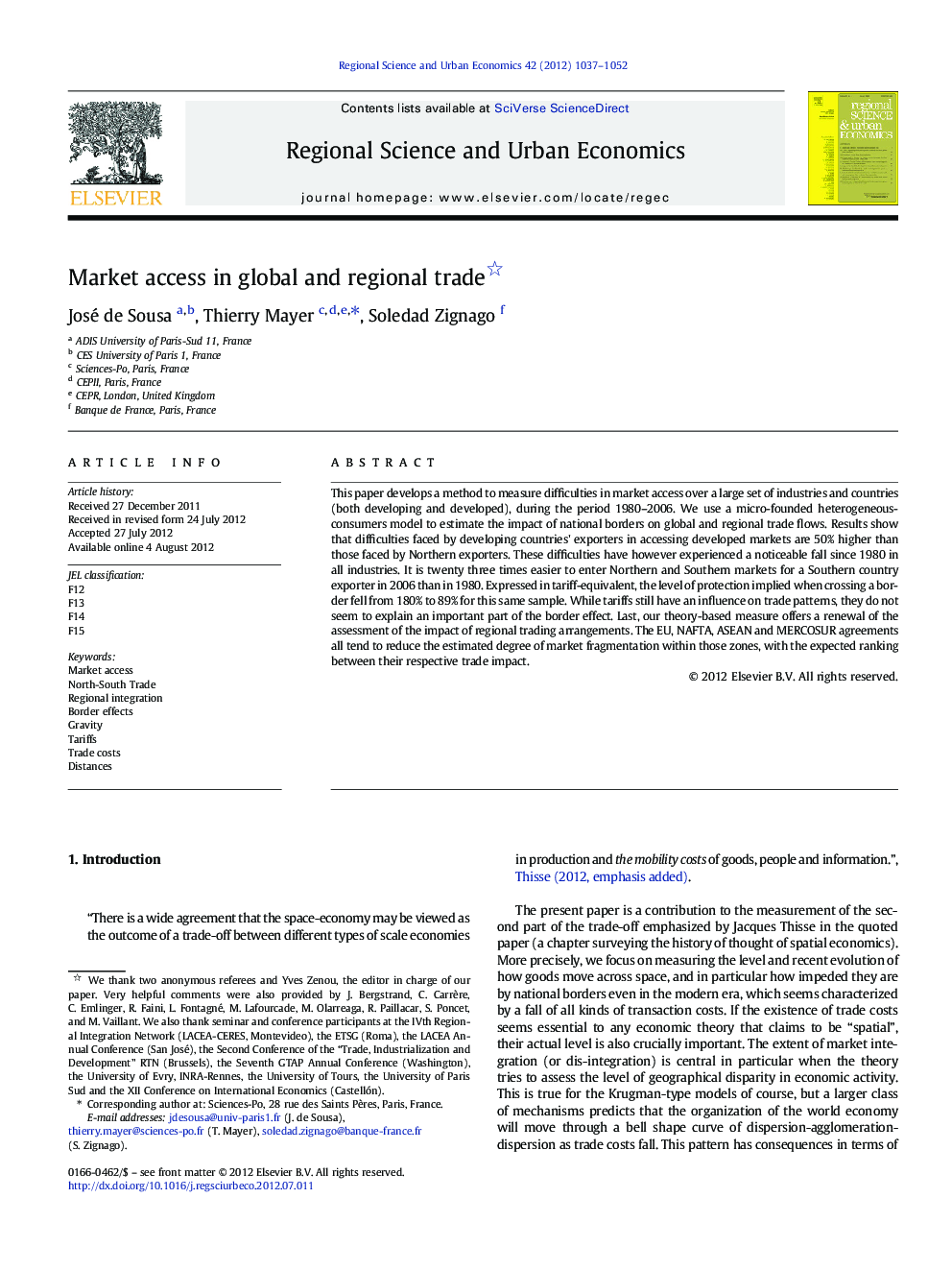| Article ID | Journal | Published Year | Pages | File Type |
|---|---|---|---|---|
| 983828 | Regional Science and Urban Economics | 2012 | 16 Pages |
Abstract
This paper develops a method to measure difficulties in market access over a large set of industries and countries (both developing and developed), during the period 1980–2006. We use a micro-founded heterogeneous-consumers model to estimate the impact of national borders on global and regional trade flows. Results show that difficulties faced by developing countries' exporters in accessing developed markets are 50% higher than those faced by Northern exporters. These difficulties have however experienced a noticeable fall since 1980 in all industries. It is twenty three times easier to enter Northern and Southern markets for a Southern country exporter in 2006 than in 1980. Expressed in tariff-equivalent, the level of protection implied when crossing a border fell from 180% to 89% for this same sample. While tariffs still have an influence on trade patterns, they do not seem to explain an important part of the border effect. Last, our theory-based measure offers a renewal of the assessment of the impact of regional trading arrangements. The EU, NAFTA, ASEAN and MERCOSUR agreements all tend to reduce the estimated degree of market fragmentation within those zones, with the expected ranking between their respective trade impact.
Keywords
Related Topics
Social Sciences and Humanities
Economics, Econometrics and Finance
Economics and Econometrics
Authors
José de Sousa, Thierry Mayer, Soledad Zignago,
